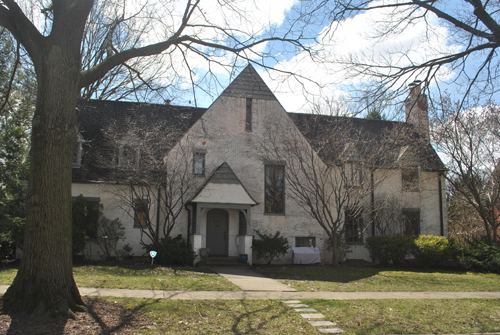French Revival (1915-1945)
 | |
Familiarity with the French prototypes through World War I and a number of photographic studies of modest French houses published in the 1920s helped popularize this style in the United States. Pre-1920 examples were mostly influenced by the elaborately detailed Chateauesque and Beaux Arts traditions. French revival was not quite as popular as the other revival styles, however, buildings of this tradition manage to combine a rural aesthetic with a sense of elegance.
| |
Tall, steeply pitched roofs without a dominant front-facing cross gable, the occasional gabled tower, eaves commonly flared upward at roof-wall junction and brick, and stone or stucco wall cladding (sometimes with decorative half timbering) are the typical identifying features of a French Revival style building.French Revival style can sometimes resemble contemporaneous Tudor style buildings due to its shared aesthetic of half-timbering with a variety of wall materials, as well as the use of roofs of flat slate, stone and thatch with the English tradition. | |
